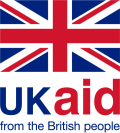You are here
Mining
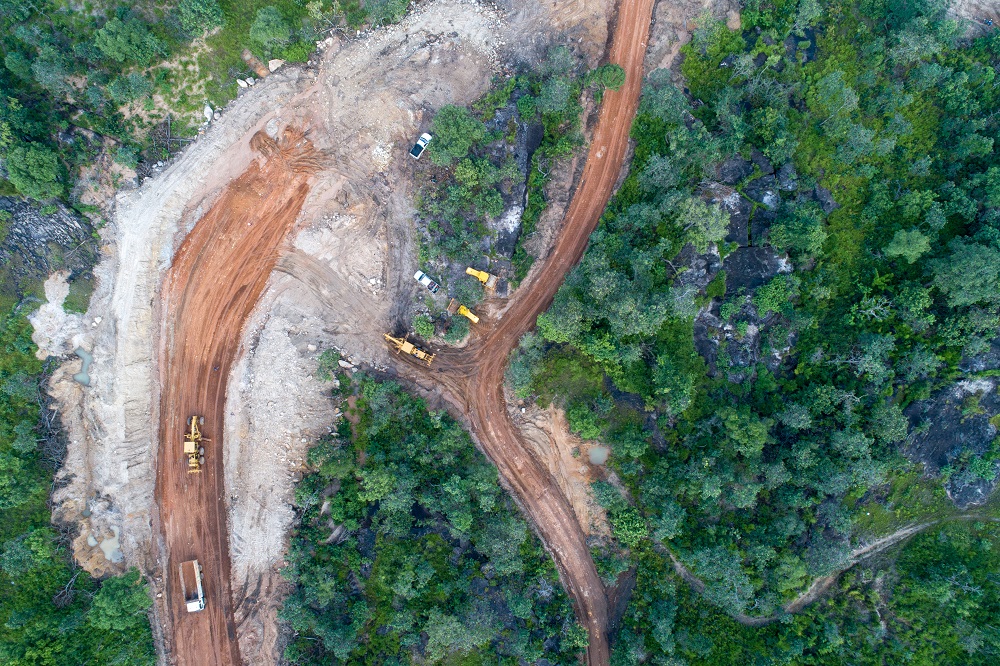
A low-carbon future must protect the world’s forests

The shift to a low-carbon future that includes clean technology such as solar panels, wind turbines, electric vehicles and batteries will require a lot of minerals. In fact, experts predict that between now and 2050 we will need more minerals than have been produced over the past 100 years. This mineral-intensive future has implications for our forests, vital to mitigate global warming. A climate-smart mining approach that protects the world’s forests is essential to reduce carbon emissions and fight climate change. Currently about 1,500 large-scale mines in the world are in tropical forests and a further 1,800 are under development or currently non-operational. More than half of these large-scale forest mines are in low- or lower-middle-income countries.
Forests provide an important carbon sink for mitigating climate change. According to the World Resources Institute, if tropical forests combined were a country, deforestation would rank third in carbon dioxide–equivalent emissions, behind China and the United States. Generically speaking, forest loss is driven by economic activity, mainly commercial and subsistence agriculture. Yet, mining plays an important, though less understood role, accounting for an estimated 7 percent of total forest loss. As the future of our planet hinges on tenths of degrees Celsius, 7 percent may well make the difference.
At a national level, mining is contributing to emissions from forest loss in numerous countries and is a dominant cause of deforestation in some. For example, in Suriname, mining is responsible for 73 percent of total deforestation, with the majority attributed to artisanal and small-scale mining (ASM) for gold.
With so much at stake, the World Bank has developed what we call a forest-smart approach to mining – ensuring that this increased need for metals and minerals will not be at the expense of forests. Thus a Climate-Smart Mining approach also needs to be Forest-Smart. Three new reports released today offer solutions to address this challenge.

So, what mining takes place in forests? Many different minerals are mined in forests, with gold, iron ore, and copper most commonly mined by large-scale operators in forests. Bauxite, titanium, and nickel are the most reliant on forest-based mines, as the ores that contain them are mostly found in forest areas. All these minerals are crucial components of low-carbon technologies as well as for cell-phones and computers.
Importantly, it isn’t principally the mine itself that causes deforestation. Our research shows that a mine is often surrounded by large-scale forest losses in areas outside the mining permit area, with notable spikes in deforestation when the mines are first established. This forest loss is largely the result of new roads, railways, ports and other infrastructure built to transport extracted minerals. In addition, the development of large-scale mines in previously uninhabited or inaccessible areas attracts people looking for new economic opportunities. The settlements they establish drive forest loss due to firewood demand, wildlife poaching, agriculture expansion and ASM activities.
To address this deforestation, a forest-smart approach to mining requires strong governance to manage the development and impacts of the mining sector, protect forests on a landscape level, and recognize and protect local community tenure and rights. It also requires responsible corporate behaviour, empowered communities, and engaged civil society stakeholders.
With this in mind, we analyzed almost 30 case studies of both artisanal and small-scale mines as well as large-scale mining operations to identify best practices that can improve forest outcomes and bad practices to be avoided. The result is a large number of practical examples and a set of 14 forest-smart mining principles.
Based on our case studies, no single site, operation, company, or country is wholly forest-smart. Yet, our case studies also demonstrate that a variety of countries are implementing forest-smart practices and applying strong policies. One key finding of our work is that political will and coordination between government entities and other stakeholders is crucial for forest-smart outcomes.
In Madagascar, the establishment of coordination platforms between managers of a national park and local authorities helped to develop effective strategies to manage illegal artisanal mining in the park and improve agricultural practices to reduce pressure on forest.
In Ghana, a mining company included community stakeholders as partners in planning, decision making, and implementation to achieve positive outcomes for forests and communities. This ongoing consultation led to communities receiving long-term stakes in the work through secure forest plots. used for sustainably managed small-scale commercial production.
In Zambia, a mining company partnered with the Forestry Department and the Department of National Parks and Wildlife to manage a large forest landscape, including the West Lunga National Park, together with local communities to protect the forest landscape and prevent further deforestation.
Our analysis identified priority countries for applying the forest-smart principles, using the criteria of high forest cover, high economic dependence on mining, a high density of mines in forest areas, and significant greenhouse gas emissions from forest degradation. Countries identified include Guinea, Ecuador, the Democratic Republic of Congo (DRC), Zambia, and Indonesia, countries where the World Bank is active in both forest conservation and mineral sector governance, and thus well positioned to help bring together experts, governments, companies and communities to implement forest-smart mining approaches. By working together, we can utilize the raw materials needed for clean-energy technologies and conserve forests at the same time – protecting the world’s forests, reducing emissions and stepping up to the climate challenge.
This blog by Kirsten Hund and Erik Reed was originally published by The World Bank
For stories and updates on related activities, follow us on twitter and facebook, or subscribe to our mailing list for regular updates.
Last Updated : 05-20-2020
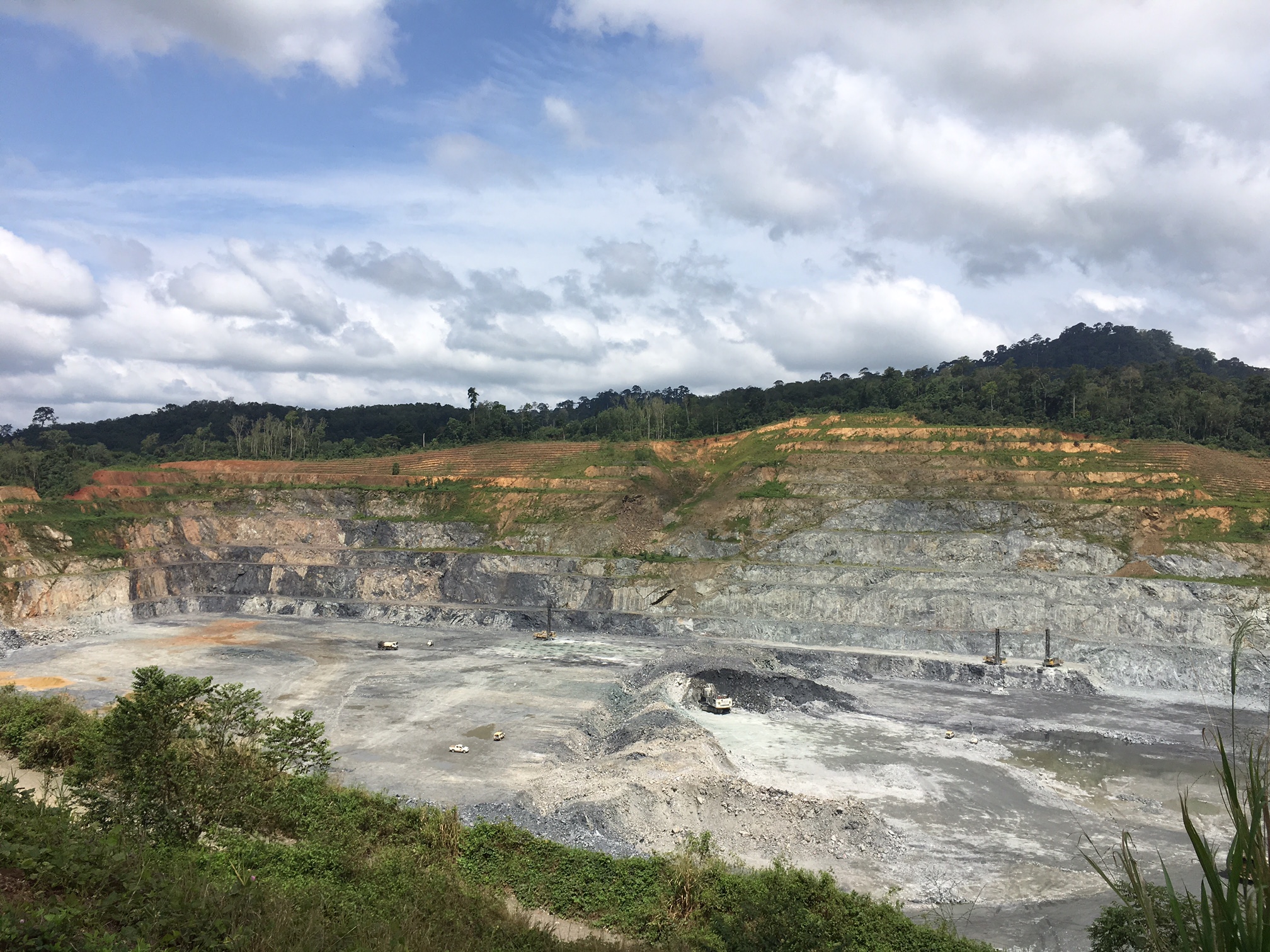
Share
Forest-Smart Mining to Advance the New York Declaration on Forests and the Sustainable Development Goals
Forests are critical for sustainable development as they provide oxygen, significantly help curb climate change, are home to a majority of global biodiversity and provide livelihoods for nearly 2 billion people. But deforestation is accelerating.
It is estimated that mining accounts for up to 7% of forest loss in developing countries. “Forest-smart mining” will be needed to both minimize direct and indirect impacts of mining on forests and to pursue opportunities for positive forest outcomes. This will require public policies, corporate practices and multi-stakeholder partnerships to address economic, social, and governance drivers of deforestation through an integrated landscape-level approach.
This dynamic side-event will be an opportunity to raise awareness about the relationship between mining and deforestation, present new research findings on forest-smart mining, and provide an overview of the New York Declaration on Forests and its Global Platform. It will highlight examples of forest-smart policies, practices and partnerships and build a shared understanding of what changes, innovations, and new initiatives may be useful to accelerate action.
Side-Event at the UN General Assembly Tues. 25 September 2018 Scandinavia House: 58 Park Avenue, New York, NY 9:30am-11:30am
Find out more here.
Photo: Tom Maddox / Fauna & Flora International
For stories and updates on related activities, follow us on twitter and facebook, or subscribe to our mailing list for regular updates.
Last Updated : 04-08-2019
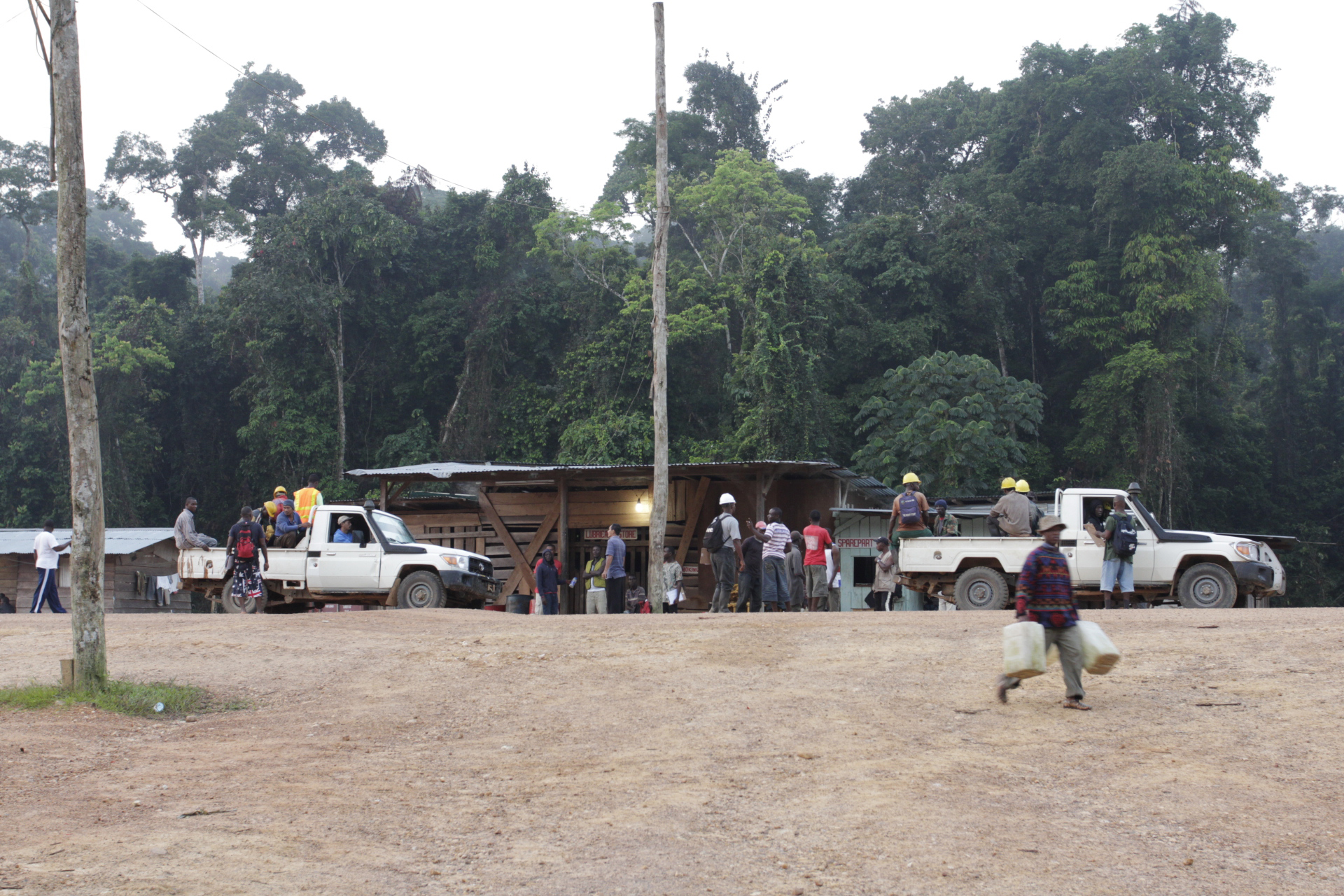
Does mining need a forest-smart approach? You bet it does!
It is well documented that the expansion of commercial and subsistence agriculture is the main driver of deforestation worldwide, responsible for about 80 percent of forest loss. The extractive industries, however, also contribute to deforestation, at about 5 percent globally. Given the difference between these sectors, is it still worth spending valuable time and funding for reducing the impacts of mining on forests? Early results from a Program on Forests’ (PROFOR) activity on “forest-smart” mining emphatically point to ‘yes.’ Here’s why:
First, while mines themselves may have a relatively small impact on forests, mining is linked to a long list of other activities that can cause rapid and widespread deforestation. For instance, moving extracted minerals from mine to market may require building transportation infrastructure like rails, roads, and ports, which incentivizes new settlements along the way, as well as demand for firewood and land to grow crops – all of which usually take place at the expense of forests.
Second, both mineral resources and forests have important implications for addressing poverty. Nonrenewable mineral resources play a leading economic role in 81 countries worldwide, which collectively account for a quarter of gross domestic product, and nearly 70 percent of people living in extreme poverty. Poor communities stand to benefit from natural resources revenue – if managed and invested in a transparent, effective, and inclusive manner – but they often rely on forest resources as well, including for income, energy, and food. The secondary impacts of mining, including the influx of job-seekers, can be especially harmful to the socio-economic and cultural fabric of indigenous and other local communities. A forest-smart approach, which recognizes forests’ significance for sustaining growth across many sectors, seeks to reconcile these differences.
Third, preliminary results from a mapping exercise show that a substantial number of the world’s mines are located in forests.[i] This was done by overlaying a map of operational, large-scale mines for 14 top commodities[ii] with a map of forested areas. The data highlights that many World Bank client countries face a situation of competing mining and forest interests, including Russia (over 200 mines in forests), Brazil (about 160 mines), Mexico (125), Indonesia (80), and Zimbabwe (80). Moreover, certain minerals are overwhelmingly sourced from mines located in forests, including bauxite (64 percent) and nickel (60 percent). This category also applies to nearly half of mined gold and a quarter of diamonds. Importantly, many of these mines are located in forests (and other ecosystems) of high conservation value.

*Map based on preliminary research by Fauna and Flora Fauna International
“Mining companies are increasingly aware of the need to avoid or minimize impacts on forests, but there is very little guidance available on how to do that in practice,” said World Bank Senior Mining Specialist Kirsten Hund, who is co-leading the forest-smart mining activity. “While every situation is context-specific, we want to develop practical guidelines that decision-makers across the public and private sectors can turn to so that forest-smart mining becomes the rule, not the exception.”
Less easily mapped than large-scale mines – but equally important - are artisanal and small-scale mining activities, which tend to be unregulated and undertaken with low-tech tools, often with devastating impacts on forests and ecosystems. Early research shows that in the top 13 countries with high levels of artisanal mining activity, forest cover is on the decline. At the same time, artisanal mining is an enormous source of employment, with over 100 million people worldwide depending on the sector.
“Because of its often informal nature, artisanal mining has direct and indirect impacts that are difficult to regulate,” said Erik Reed, World Bank natural environmental specialist and co-task team leader for the project. “That’s why we are engaging in two distinct but related areas of research under this activity, to draw out best practices for both types of mining.”
Ultimately, there may be many ways for a mining project to be considered ‘forest-smart.’ What is clear is that mining often presents a threat to many of the world’s forests – and the wellbeing of the communities who depend on them. Thus it is critical to learn from past failures and successes on how to become “forest-smart” in order to better balance the challenges and opportunities of these two often-competing resources.
“The forest-smart development approach seeks out opportunities for mutual benefit,” said PROFOR Manager Werner Kornexl. “PROFOR is helping develop practical tools and policy recommendations that promote the sustainable growth of mining and other sectors, without destroying the public good provided by forests. The lessons and experiences derived from this mining work will also be relevant for geothermal development and transportation investments.”
This research on forest-smart mining is being supported by PROFOR, a multi-donor World Bank global program, and carried out by a consortium of organizations, including Fauna and Flora International, Estelle Levin Ltd., and Swedish Geological AB.
[i] Based on the definition of ‘forest’ determined by the Food and Agriculture Organization of the United Nations.
[ii] While coal has by far the highest percentage of total production value by commodity (approximately 42%), this analysis will focus on the next 14 commodities, which capture close to half of the remaining total production value and 40% of the world’s operational large-scale mines (considering metals and precious minerals, not development minerals).
For stories and updates on related activities, follow us on twitter and facebook, or subscribe to our mailing list for regular updates.
Last Updated : 08-27-2018
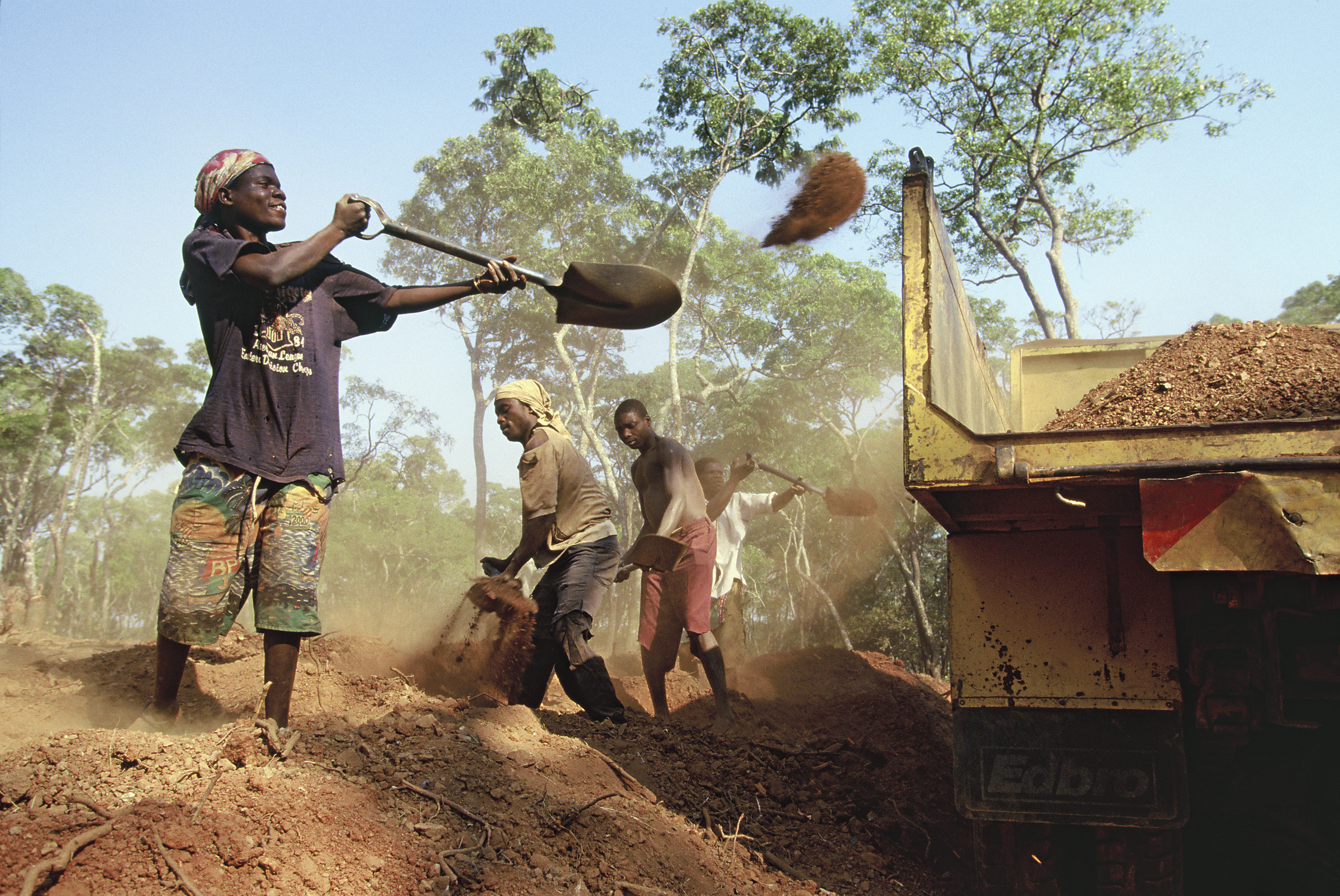
In Mozambique, Government, Conservationists and Private Sector Come Together to Protect Biodiversity
When it comes to protecting our planet’s biodiversity, we can’t afford to not have a plan – especially where environmental impacts are inevitable.
In conservation, the “last resort” option is an approach known as biodiversity offsets. It involves preserving habitat in one area to compensate for unavoidable environmental damage elsewhere, usually as a result of large projects, such as those involving mining or oil and gas development.
“Offsets are based on the ‘mitigation hierarchy’ approach to environmental damage,” explained World Bank Senior Environmental Specialist Douglas J. Graham. “First try to avoid it, minimize it, or restore any affected areas; if nothing else is feasible, look to biodiversity offsets. Where losses simply cannot be avoided but are deemed acceptable, compensate for the losses by protecting similar habitat somewhere else.”
Graham, along with his colleague George Ledec, World Bank Lead Ecologist, has recently been supporting the Government of Mozambique in thinking through what a “last resort” program would look like given the country’s complex conservation challenges. Mozambique is rich in biodiversity but faces tough development issues, including a poverty rate above 50 percent. Biodiversity offsets present a solution for protecting habitats – including providing badly needed funds for Mozambique’s protected areas, which cover 21 million hectares, or 26 percent of the country’s land area – while tapping into valuable natural resources from the mining and petroleum sectors.
National-level biodiversity offset systems are both complicated and without much precedent: Liberia is another African country where this approach is being tested with support from the World Bank. With funding from PROFOR, Graham and Ledec guided a team in Mozambique to put together a Road Map for Mozambique to show how this could be achieved.
“Mozambique is an incredibly interesting place to be implementing biodiversity offsets,” Graham noted. “First, it has very large mining and oil and gas infrastructure projects. Second, private sector companies are required to protect biodiversity in order to comply with international finance regulations [specifically the International’s Finance Corporation’s 2012 Environmental and Social Performance Standards and the Equator Principles]. And third, the Government is very interested in making this a success. The Ministry of the Environment (MITADER) has even shown their commitment by modifying the decrees regulating environmental impact assessments, requiring that large projects result in no net loss of biodiversity.”
The Road Map notes that, far from being a burden to private companies, this new regulation may actually speed up the approval process for new projects by clarifying procedures, giving companies a way forward to comply with national rules and international standards, for which they are increasingly accountable.
Moreover, Mozambique already has an organization capable of operating the offsets program. The Foundation for the Conservation of Biodiversity (BIOFUND), supported under a separate World Bank project, is primed to make the difficult calculations of how much of one habitat is equal to another; to collect and manage funds from private sector companies, and to protect those “equivalent” habitats in perpetuity. BIOFUND also has the responsibility of classifying habitats based on their level of biodiversity, and mapping critical areas where offsets are not appropriate.
“Some habitats are so rare and so important that they shouldn’t be sacrificed,” Graham said. “For example, this appears to be the case with the Swahili coastal forests in northern Mozambique; that ecoregion could be considered a no-go because of its high global biodiversity value and lack of protection.” Biodiversity offsets are never meant to justify development projects that would seriously damage habitats with unique and irreplaceable biodiversity.
Importantly, the initial steps laid out in the Mozambique Road Map are actively taking place, thanks to a proactive MITADER, significant follow-up funding from the Agence Française de Développement (AFD), and World Bank support to BIOFUND.
“This is a great example of a partnership between the government and a willing private sector,” Ledec said. “Very big international companies are involved with investments worth many millions of dollars. They really want to do this, to show to their boards and to the world that they are meeting their commitments. But they can only do this if the money is well used and handled transparently.”
The Mozambique Road Map was produced as a part of the broader PROFOR-supported work on biodiversity offsets, which includes a Global Biodiversity Offsets User Guide to advise the World Bank and other groups on whether, when, and how to prepare and implement offsets. The Mozambique Road Map is available in English and Portuguese.
(Photo: Victor Brott via Sida Swedish Int. Development Cooperation Agency, Flickr CC)
For stories and updates on related activities, follow us on twitter and facebook, or subscribe to our mailing list for regular updates.
Last Updated : 04-01-2018
It’s time to get smart about sustainable forests. Here’s how.
It isn’t just our technology that cries out for “smart” solutions. The development challenges of an increasingly connected world demand ever more comprehensive answers – and forests are no exception. The risks to forested lands stem from multiple sources, from the development of mining and road infrastructure, to expanding agricultural production, to the growing demand for woodfuels. To address these challenges in a sustainable manner, we need to partner with leaders and stakeholders in other sectors to develop solutions that minimize or avoid damaging effects and enhance forests’ contribution to environmental, economic and social benefits. In short, we need solutions that are “forest-smart.”
To make these objectives a reality, PROFOR continues to develop a forest-smart approach that emphasizes the role of forests within a broader landscape, where changes in forest cover can have very real and wide-reaching impacts on people and their wellbeing. We are partnering with experts outside of the forestry realm, including mining, disaster risk management, energy and agriculture, to help turn these sectors into forest champions. PROFOR’s ultimate goal is to transform how other sectors operate by identifying opportunities for mutual benefit, and devising innovative solutions that benefit people and the environment, and can be carried out at a large scale.
For instance, green infrastructure like mangrove forests can act as a buffer against storms, flooding, and coastal erosion – and unlike traditional “gray infrastructure” like sea walls and levies, mangroves provide valuable fish habitats, which translates into benefits for fisheries, tourism and local jobs. In Jamaica, PROFOR-supported work on nature-based infrastructure is guiding national planning for managing risks from natural disasters.
The extractive industries are another area where we can get smarter. The footprint from mining operations and their related infrastructure (such as constructing roads and settlements) can be devastating to forests, biodiversity, and forest-dependent communities. However, an array of new tools has emerged on ways to minimize or offset these negative impacts. PROFOR’s forest-smart mining program is building understanding for how to apply these new practices across a range of different contexts.
Agriculture, too, presents forest-smart opportunities. PROFOR research highlighted the many benefits of growing trees on farms, including boosting productivity, supplementing household incomes, and sequestering greenhouse gases. Especially promising is the tremendous potential for applying these tree-based practices at the national level.
While all of PROFOR’s forest-smart programs have implications for reducing poverty, PROFOR has also identified ‘poverty’ as a core thematic concern when it comes to sustainable forests. While there is growing evidence on forests’ contribution to the livelihoods and subsistence of poor communities, much less is known about the extent to which forests can provide a pathway out of poverty. To help fill this knowledge gap and make the case for forests as tool against poverty, PROFOR is collaborating with an ongoing household survey initiative to collect nationally representative data. PROFOR is also strengthening its focus on gender, contributing to more inclusive projects that take into account the different ways in which men and women access, use, and manage forests.
In essence, forest-smart strategies deliver benefits for the climate as well as for development. These strategies are increasingly in demand as countries face multiple competing pressures on their resources and lands, and the magnitude of climate change risks become more and more apparent. To build the necessary resilience to face these challenges, we can’t afford to be anything less than forest-smart.
For stories and updates on related activities, follow us on twitter and facebook, or subscribe to our mailing list for regular updates.
Last Updated : 07-19-2017
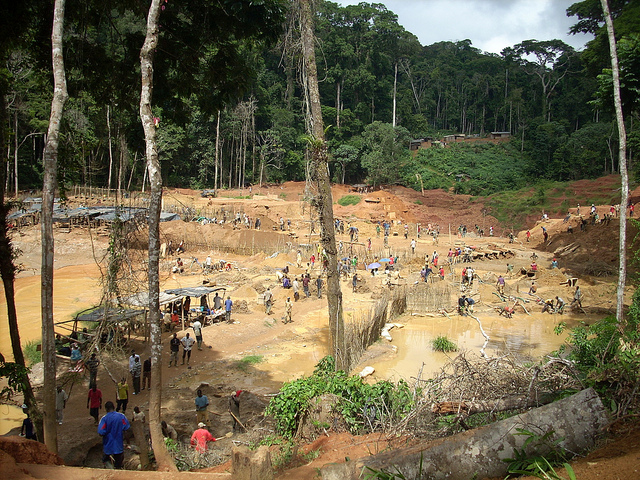
Extractive Industries in Forest Landscapes: Balancing the Trade-offs and maximizing the benefits
CHALLENGE
About 3.5 billion people live in countries rich in oil, gas, or minerals. Many of these countries also suffer from poverty, corruption, and conflict stemming from weak governance. Nonrenewable mineral resources play a dominant role in 81 countries, which collectively account for a quarter of gross world product, half of the world’s population, and nearly 70 percent of those in extreme poverty. The World Bank Group’s involvement in extractive industries seeks to help countries seize the opportunities that mining companies offer for development, poverty reduction, and boosting shared prosperity. Most World Bank Group interventions in extractive industries are in the governance area, to encourage transparent management of industry revenues so that they provide benefits for local people and so that the industries themselves respect local community needs and the environment.
At the same time, more than one-quarter of the world’s active mines and exploration sites overlap with, or are situated within, a 10-kilometer radius of, a strictly protected area. Nearly one-third of all active mines and exploration sites are located within areas of intact ecosystems of high conservation value, most of them forests. Almost one-third of all active mines are located in stressed watersheds. Infrastructure developments associated with oil and mineral developments represent the most important threat to ecosystems through physical incursion into forests and disruption of the ecosystems. Road and railway development could be particularly harmful. Building a new road drives direct deforestation through tree cutting, but this impact is generally limited. Most importantly, roads are the major vehicle for forest degradation through further incursion into forest areas for agriculture, hunting, artisanal mining, and other potentially harmful activities. Added to that, a large-scale mine has considerable energy requirements, which will lead to the construction of hydropower dams, oil and gas pipelines, and power lines. Nevertheless, oil and mining companies can contribute considerably to sustainable forest management, and have done so in the past, by implementing measures for forest conservation and community development in and around their concessions.
There is increasing pressure on individual companies to implement standards to mitigate and offset negative environmental impacts. Yet there is a limit to what private-sector-driven, project-specific measures can do. These kinds of voluntary standards also tend not to affect artisanal and small-scale miners and other "rogue" players, who tend to have the largest environmental footprint. In order to address all players, an integrated landscape-level planning and enforcement process is needed.
APPROACH
This program will transform the way the World Bank Group works with its clients on extractive industries in forest-rich countries, so that oil, gas, and mineral extraction contribute to sustainable forest management and poverty reduction for the people depending on those forests. The program also introduces this knowledge to the Bank's vast networks of private companies and government partners.
Activities have been chosen based on the most urgent issues impacting the forest sector, and existing World Bank Group projects that have the potential for the greatest impact and replicability. Two major studies are underway, focused on Artisanal and Small-Scale Mining (ASM) and Large-Scale Mining (LSM), and how to make these sectors forest-smart.The lessons and recommendations will be based on both good and bad practices in different parts of the world, looking at a range of geographical, governance, and ecological factors. The two studies include analysis of the thematic areas and the identification of 15-20 case studies each, following a detailed analytical framework that was developed to support consistency and comparability.
RESULTS
This project has been completed. The outcomes were achieved, the development of tools and analysis around forest smart mining was largely successful. The development of an understanding related to what could be achieved in Artisanal and Small-Scale Mining (ASM) and Large Scale Mining (LSM) as well as biodiversity offsets were important accomplishments. The rich list of thematic case studies pulled together experiences from all over the world, highlighting good and bad practices on a continuum as well as making practical recommendations for dialogue with private sector stakeholders as well as with Governments. The three reports below identified the first known lessons learned for implementing a “forest-smart” approach to LSM and ASM:
- Forest-Smart Mining: Identifying Good and Bad Practices for Artisanal & Small-Scale Mining in Forest Landscapes
- Forest-Smart Mining: Identifying Factors Associated with the Impacts of Large-Scale Mining on Forests
- Forest-Smart Mining: Offsets case studies
Based on these reports, a series of 16 Principles have been identified that should guide a ‘forest smart’ policy framework for the mining sector. These have been integrated in an executive summary. Based on this, tools will also be developed for the relevant stakeholders.
The findings of the reports were presented at several high-level policy and industry events raising awareness within the mining industry on the impact of mining on deforestation and the possibilities to address the carbon footprint of mines by actively working on mitigating their forest footprint and striving for net gain of forest cover in and around their operations.
There is also a direct relevance of the work for World Bank investments, such as the Forest Investment Program (FIP). The results have also informed the preparation for additional funding in Ghana, the Zambia REDD+ Investment Plan, and a new mining operation in DRC.
The work has also been integrated in a larger project currently being developed by the World Bank Energy and Extractives practice, called ‘Climate Smart Mining’. This looks at the carbon footprint of mineral extraction for the minerals that are being used, at an increasing scale, for building clean-energy technologies. Being’ Forest Smart’, is addressed as one of the most effective tools for mining companies to address their carbon footprint.
For stories and updates on related activities, follow us on twitter and facebook, or subscribe to our mailing list for regular updates.
Last Updated : 06-09-2020
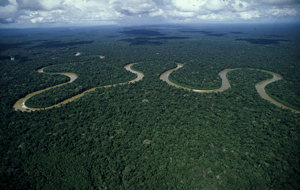
Share
Related Links
Sectoral Report: Mining (April 2013)
Republic of Congo: Balancing Mining Development and Forest Conservation in the Congo Basin
Keywords
Congo Basin, Cross-sectoral, Green Growth, Land Tenure, Mining
Authors/Partners
World Bank Africa Region and World Bank Oil, Gas and Mining Policy Division (SEGOM).
Balancing Mining Development and Forest Conservation in the Congo Basin
CHALLENGE
Deforestation in the Congo Basin is expected to increase significantly in the future as investment in productive sectors grows. Thus, it will be essential to assist Congo Basin countries in ensuring that forestland development is planned and implemented in such a way as to avoid, minimize and/or offset unnecessary economic losses and social hardship and to draw optimal benefits from sustainable forest resource use. In 2013, the World Bank published a study on “Deforestation Trends in the Congo Basin – Reconciling Economic Growth and Forest Protection,” with support from PROFOR. One of the sectors covered by the study was the mining sector.
Early planning for the development of mineral resources, including the associated infrastructure (roads, railroads and energy, in particular) may help to reduce future impact, create development benefits at the local level, and enhance the sustainability of mining-driven development. However, land-use planning and zoning exercises in the Congo Basin so far have been centered on the forestry sector and have had limited impact on development policies in other sectors.
APPROACH
The development objective of this activity is to come up with innovative cross-sectoral methodologies and stakeholder processes that inform the decision-making process on large mining and associated infrastructure developments, enabling decision makers to reduce forest loss and the resulting negative environmental and social impacts. Activities included:
- Lessons learned from relevant initiatives; and
- Participatory land-use planning. The team conducted a land-use planning and road map exercise, and developed sector-specific recommendations for the Republic of Congo (ROC).
RESULTS
This activity led to the development of an informed process – applicable at both the national and sub-national level - for how the Government of ROC can move forward on land use planning. The activity stressed the significance of inclusive and participatory methods, as well a mechanism for settling disputes, and a process that works across sectors. The introduction of spatial analysis tools enabled government authorities to (i) develop a clearer understanding of how they can pull together information related to competing interests, such as economic development and social and environmental impacts; and (2) advance practices that can help harmonize development initiatives, even if it is not possible to resolve every conflict.
The ROC Ministry of Land Use Planning and Public Works led much of the exercise, which was also supported by the World Resources Institute. While there is still implementation work to be done, investments in the forest, agriculture and mining sectors have sought out how to incorporate the practices, tools and processes that were highlighted in this activity. There has also been greater coordination the different sectoral ministries. Results from this activity will also inform ongoing investments, including REDD+ activities under the Forest Investment Program (FIP), and were used in the preparation of the Congo Commercial Agriculture Development Project.
In addition, this activity helped to consolidate knowledge, best practices and tools on land use planning, and share them with multiple stakeholders in the Republic of Congo, including government ministries, NGOs, civil society organizations and indigenous peoples’ groups. Since participants from the Democratic Republic of Congo (DRC) are undergoing a similar process, they benefited from learning about the experience in ROC.
For stories and updates on related activities, follow us on Twitter and Facebook, or subscribe to our mailing list for regular updates.
For stories and updates on related activities, follow us on twitter and facebook, or subscribe to our mailing list for regular updates.
Author : World Bank Africa Region and World Bank Oil, Gas and Mining Policy Division
(SEGOM).
Last Updated : 02-28-2017
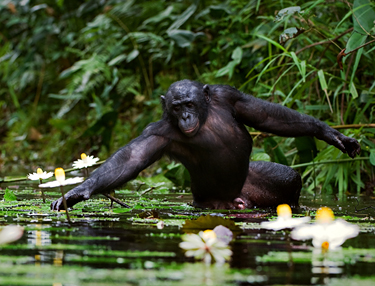
Share
Attachments
OFFSETS-PUBLIC INFORMATION NOTE.pdf
Download
Biodiversity Offset Users Guide
Mozambique Biodiversity Offsets Roadmap (PDF October 2016)
A National Biodiversity Offset Scheme: A Road Map for Liberia's Mining Sector
Trouble in the forest seen through the eyes of orphan bonobos
Balancing Mining Development and Forest Conservation in the Congo Basin
Digging In: New Opportunities for Mining and Conservation in Africa
Public information note about the study (PDF Sept 2013)
Authors/Partners
World Bank Africa Region
Biodiversity Offsets Toolkit and Sourcebook
CHALLENGE
In many African countries, native forests are under pressure from rapidly-spreading roads, dams and other infrastructure, as well as the allocation of large forest areas to mining, commercial agriculture, and other non-forest uses. Biodiversity offsets are one of the tools available to address such pressures. Offsets can be used to strengthen protected areas of similar or greater conservation value than the area lost to specific projects. The driving impetus for such offset schemes is usually biodiversity protection, although the associated conservation areas provide additional ecosystem services such as soil and water conservation, flood mitigation, and habitat for sustainably exploitable fisheries. In an era of often flat -- and sometimes declining -- governmental support for forest conservation in general and protected areas in particular, biodiversity offsets provide an underutilized opportunity to mobilize substantial new funding from public infrastructure accounts as well as the private sector.
Biodiversity offsets are not a panacea, nor are they always the best tool available for achieving forest conservation. As part of the “mitigation hierarchy” underpinning the World Bank’s Safeguard Policies and the IFC’s Performance Standards, offsets are considered a last resort, after efforts to avoid, minimize, and restore any significant damage to forests or other natural habitats. Nonetheless, given that many infrastructure, extractive, and other large-scale projects have an inherently large footprint, a biodiversity offset scheme may be warranted (and required by some funding entities).
A key challenge is systematizing and scaling-up biodiversity offsets through a national or other aggregated offset approach in order to overcome limitation like: (i) the high transaction costs often borne by each separate project; (ii) sub-optimal selection of conservation offset areas due to uncoordinated, ad-hoc approaches; and (iii) insufficient participation and ownership by governmental authorities in arrangements negotiated primarily between large private firms and conservation NGOs. The cumulative impacts of multiple (including smaller-scale) projects could also be more effectively addressed through an aggregate offset approach.
APPROACH
Under this activity, the team produced a Biodiversity Offsets User Guide containing key information about biodiversity offsets that practitioners should know about, with references provided where readers could obtain further information. Three case studies of reasonably successful biodiversity offsets were added to the User Guide as annexes. The case studies involved two private sector mining projects (in Liberia and Madagascar) and one World Bank-supported hydropower project (in Cameroon). These case studies are intended to show readers how the concepts explained in the User Guide can realistically be applied to achieve positive results on the ground.
In addition, in response to a strong expression of interest from the Government of Mozambique, this activity also provided legal technical assistance for incorporating biodiversity offsets into the Government’s official Environmental Impact Assessment (EIA) process. Two reports were produced: (i) An analysis of Mozambican environmental legislation with respect to the use of biodiversity offsets; and (ii) a draft revision of the actual EIA regulations.
Finally, two pilot Country Roadmaps were completed to assess the potential for large-scale biodiversity offset systems in Liberia and Mozambique. The Roadmaps are intended as preliminary country examinations of legal and regulatory frameworks, national policies, land use plans, financial structures, and other relevant information.
RESULTS
The research team found that multiple detailed publications already exist about the details and controversies of biodiversity offsets, but that a concise reference with practical advice on how actually to do them was still lacking. This is the void that the Biodiversity Offsets User Guide seeks to fill.
The Liberia Biodiversity Offsets Roadmap emphasizes industrial-scale mining. Since adequate funding for Liberia’s protected areas remains a challenge, biodiversity offsets offer the potential for improved financial sustainability. The Liberia Roadmap outlines a series of steps for scaling-up biodiversity offsets in Liberia; among the most important is the establishment of a national Conservation Trust Fund to enable the reliable and transparent transfer of funds from extractive firms to priority Protected Areas. The new Liberia Forest Sector (REDD+) Project, approved in April 2016 with support from the World Bank and Government of Norway, provides a vehicle for moving forward the Roadmap’s key recommendations.
In Mozambique, existing Conservation Areas (CAs) cover about 26% of the country’s land area, and encompass most types of terrestrial and aquatic ecosystems. However, most are seriously underfunded. The Mozambique Biodiversity Offsets Roadmap (also available in Portuguese) proposes using Mozambique’s BioFund to transfer biodiversity offsets funding from infrastructure and extractive industry projects to selected CAs that are ecologically similar to the project-affected areas. Implementation has begun of the Roadmap’s recommendations, through the Government’s recently revised Environmental Impact Assessment Regulations.
For stories and updates on related activities, follow us on Twitter and Facebook, or subscribe to our mailing list for regular updates.
For stories and updates on related activities, follow us on twitter and facebook, or subscribe to our mailing list for regular updates.
Author : World Bank Africa Region
Last Updated : 02-28-2017
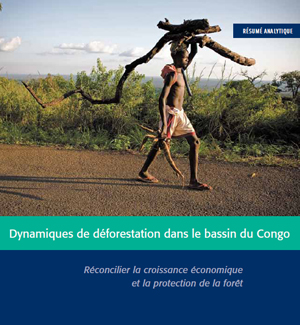
Share
Attachments
Deforestation in Congo Basin_full report_feb13_0.pdf
Dynamiques-de-déforestation-final_0.pdf
DeforestationTrendsCongoBasin-ExecSumm-English_0.pdf
Dynamiques-deforestation-Congo-FR-resume_0.pdf
Agriculture_Sectoral Report_FINAL [web]_may13_0.pdf
Biomass Energy_Sectoral Report_FINAL[web]_may13_0.pdf
Logging_Sectoral Report_FINAL[web}_may13_0.pdf
Mining_Sectoral Report_FINAL[web]_may13_0.pdf
Transport_Sectoral Report_FINAL[web]_may13_0.pdf
Agriculture_Sectoral Report_FR_FINAL_may13_0.pdf
Energie_Sectoral Report_FR_FINAL_may13_0.pdf
Exploitation forestière_Sectoral Report_FR_FINAL_may13_0.pdf
Mines_Sectoral Report_FR_FINAL_may13_0.pdf
Transport_Sectoral Report_FR_FINAL_may13_0.pdf
Authors/Partners
World Bank Africa Region, COMIFAC, International Institute for Applied Systems Analysis, PROFOR, Norwegian Trust Fund for Private Sector and Infrastructure, UK Government, Trust Fund for Environmentally and Socially Sustainable Development, Forest Carbon Partnership Facility.
Author: Carole Megevand, with Aline Mosnier, Joël Hourticq, Klas Sanders, Nina Doetinchem, and Charlotte Streck.
Economic Growth and Drivers of Deforestation in the Congo Basin
CHALLENGE
Though the deforestation rates in the Congo Basin countries have historically been low, the trend is likely to change dramatically due to the combination of many different factors: population increases (and associated expansion of subsistence agriculture and fuelwood collection); local and regional development; and the rise in global demand for commodities.
The countries of the Congo Basin face the dual challenge of developing local economies and reducing poverty, while limiting the negative impact of growth on the region's natural capital.
APPROACH
PROFOR supported an in-depth, multi-sectoral analysis of the major drivers of deforestation and forest degradation for the next decades in all six of the Congo Basin countries (Cameroon, Central African Republic, Gabon, Democratic Republic of Congo, Equatorial Guinea and Republic of Congo). The overall study was led by the World Bank Africa Region. A team from the International Institute for Applies Systems Analysis (IASA) led a modeling exercise, based on the GLOBIOM model but tailored to the Congo region, to investigate drivers of deforestation by 2030 and assess the impacts of various "policy shocks" (such as: increased international demand for biofuel; improved transportation infrastructure; improved agricultural technologies; etc). The approach also relied heavily on the inputs from multi-stakeholder regional workshops and in-depth sectoral reports (available on this page).
MAIN FINDINGS
- Deforestation rates are likely to increase in the future to sustain development and poverty reduction.
- Increasing agricultural productivity is not sufficient to limit pressure on forests.
- Wood extraction for domestic fuelwood or charcoal production will continue to grow for the next few decades and could create a massive threat to forests in densely populated areas.
- The development of much-needed transportation infrastructure could lead to major deforestation, mainly by changing economic dynamics in newly accessible rural areas.
- The pressure from formal logging is limited, but informal chainsaw logging is expected to progressively degrade forests.
- Mining—a largely untapped source of income and growth—could also lead to significant impacts when the sector develops.
MAIN RECOMMENDATIONS
The study highlights options to limit deforestation while pursuing inclusive, green growth. Emerging environmental finance mechanisms, such as reducing emissions from deforestation and forest degradation (REDD+), may provide additional resources to help countries protect their forests. But there are already a number of “no-regrets” actions that countries can take to grow along a sustainable development path:
- Participatory land use planning could help clarify tradeoffs among different sectors, encourage the development of growth poles and corridors, and direct destructive activities away from forests of great ecological value.
- Unlocking the potential of the Congo Basin for agriculture will not necessarily take a toll on forests: the Congo Basin could almost double its cultivated area without converting any forested areas. Policy makers should seek to target agricultural activities primarily towards degraded and nonforested land.
- In the energy sector, putting the woodfuel supply chain on a more sustainable and formal basis should stand as a priority. More attention should be paid to responding to growing urban needs for both food and energy through intensified multi-use systems (agroforestry).
- Better planning at the regional and national levels could help contain the adverse effects of transportation development, through a multi-modal and more spatially efficient network.
- Expanding sustainable forest management principles to the booming and unregulated informal logging sector would help preserve forest biomass and carbon stocks.
- Setting “high standard” goals for environmental management of the mining sector could help mitigate adverse effects as the sector develops in the Congo Basin.
See also: Main recommendations by sector (English) - Recommandations principales par secteur (français)
RESULTS
The results from the modeling exercise were shared over the years: at the UNFCCC Conference of Parties 15 in Copehagen, at the World Bank in January 2010 and February 2013( "SDN week" ) and at multiple regional conferences and workshops (Kinshasa, Douala, Brazzaville 2009-2012; final regional conference in Kinshasa, May 2013 - see conference presentations here).
The findings have helped Congo Basin countries better understand the diversity of factors of deforestation --beyond logging -- and the impact of indirect external factors such as global commodity demand.
The knowledge generated from this activity is critically important as Congo Basin countries prepare their REDD+ and broader development strategies. If countries are able to minimize forest loss as their economies develop, they could "leapfrog" the steep drop in forest cover that has historically accompanied development in many countries, and make an important global contribution to climate change mitigation.
For stories and updates on related activities, follow us on twitter and facebook, or subscribe to our mailing list for regular updates.
Author : World Bank Africa Region, COMIFAC, International Institute for Applied
Systems Analysis, PROFOR, Norwegian Trust Fund for Private Sector and
Infrastructure, UK Government, Trust Fund for Environmentally and Socially
Sustainable Development, Forest Carbon Partnership Facility.
Author: Carole Megevand, with Aline Mosnier, Joël Hourticq, Klas Sanders,
Nina Doetinchem, and Charlotte Streck.
Last Updated : 02-24-2017
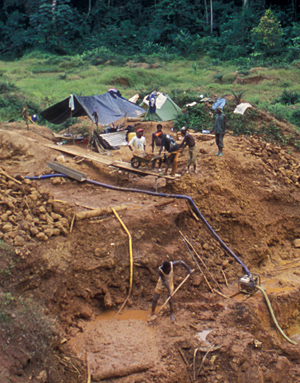
Share
Attachments
Download
Artisanal and Small Scale Mining: A Summary (PDF- 24 pages May 2013)
ASM-PACE Global Solutions Study
Liberia Case Study (June 2012)
ASM-PACE Methodological Toolkit (June 2012)
Field Notes: Green gold for Gabon (Nov. 2012)
Record Gold Prices Drive Deforestation in Peruvian Amazon
Authors/Partners
WWF, Fauna and Flora International, and Estelle Levin Ltd, for the World Bank Africa Region.
Impact of Artisanal and Small Scale Mining in Protected Areas
CHALLENGE
Artisanal and small scale mining (ASM) is an important source of income for millions of poor people around the world. The past decade has seen increasing numbers of individuals and households turn to ASM, and this trend is likely to grow in the face of high mineral prices, population growth, poverty and climate change. Because ASM activities contribute to poverty reduction in remote rural areas, efforts to simply eradicate the activity tend to fail.
However ASM tends to destroy and degrade forest ecosystems (through habitat destruction, the use of toxic chemicals, pollution of waterways, etc) and threatens the practices on which mining populations depend (for example, gathering firewood, bushmeat hunting, timbering for construction, etc). It is also a growing driver for internal migration and colonization of frontier forest lands that may lead to permanent land clearance.
APPROACH
With PROFOR support, the World Bank's Africa regional staff contracted WWF and Estelle Levin Ltd to conduct studies in Liberia and Gabon to analyze the impacts of artisanal mining activities on high-value natural landscapes and the people who live nearby. Drawing lessons from the assessment of two national parks (Ndangui in Gabon and Sapo National Park in Liberia) and existing literature on succesful park management, the case studies, the global solutions study and the methodolgical toolkit offer recommendations on how to reconcile socio-economic development based on artisanal mining and preservation of important ecological sites.
MAIN FINDINGS
The study looked at 36 countries and found that artisanal and small scale mining was taking place either inside or along the borders of 96 out of 147 protected areas in those countries. In the end, the project looked in more depth at experiences in three countries: Liberia, Gabon and Madagascar (case study is forthcoming) -- see videoclip for findings.
It concluded that military efforts to permanently remove illegal miners from protected areas were not sustainable in the long run (particularly if a source of minerals is well known), and that other solutions could help breach a compromise between conservation goals and mining activities:
- For example, there are potential opportunities to develop sustainable mining through a sustainable supply chain approach, notably in Gabon where miners do not use mercury to extract gold.
- Short of eviction, co-existence and degazetting parts of protected areas are also options that allow negotiated access to mineral resources.
- Although replacing artisanal and small scale mining with large-scale operations may be attractive from a government regulation point of view, they do not offer the same number of jobs that smaller operations do.
The Methodological Toolkit has been designed to help users:
1.Rapidly assess and map environmental, social and economic impacts of Artisanal and Small-scale Mining,with a particular focus on protected areas, critical ecosystems and vulnerable groups.
2.Identify potential solutions and alternative approaches through assessment of past efforts (both successes and failures) to address the identified short- and long-term environmental impacts.
3.Identify and develop measures that can produce concrete improvements in critical ecosystems through sustainable solutions that reduce the environmental and social damage caused by ASM, while building on its economic, social, and empowerment potential.
For stories and updates on related activities, follow us on twitter and facebook, or subscribe to our mailing list for regular updates.
Author : WWF, Fauna and Flora International, and Estelle Levin Ltd, for the World Bank
Africa Region.
Last Updated : 02-07-2017
